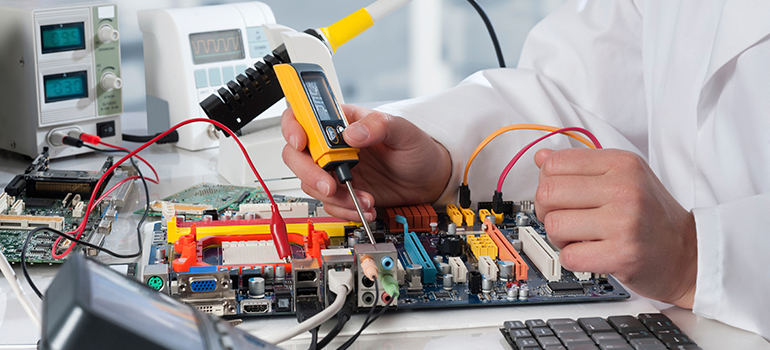Fuel Cells vs Batteries in the Automotive Sector

What are the benefits of fuel cell vehicles?
15 July 2014
If you follow the alternative fuel industry, you might have heard this small pearl of “wisdom”: Fuel cells are a technology of the future and always will be. On the other hand, electric vehicle (EV) supporters claim that are EVs represent the automotive future and, by the way, can be bought today.
The EV forums are full of comments that fuel cells will never be a part of the transportation system, and that any money spent on fuel cell development is good money thrown after bad. To be fair, fuel cells have seemed to be on the cusp of commercialization in vehicles several times in the past, only to famously fail to take hold - the last time being in the mid-2000s.
But what are the benefits of fuel cell vehicles (FCVs)? Fuel cells do have strengths that can’t be ignored. For one thing, unlike conventional batteries, the reactants (the chemicals that are needed for the electrochemical reaction that produces electricity) are external, meaning that as long as the reactants continue to be fed to the fuel cell, electricity can be produced. Refueling an empty reactant tank is also much faster than recharging a battery.
There are several different types of fuel cells, including alkaline fuel cells (AFCs), direct methanol fuel cells (DMFCs), phosphoric acid fuel cells (PAFCs), molten carbonate fuel cells (MCFCs), and solid oxide fuel cells (SOFCs). However, proton exchange membrane (also known as polymer electrolyte membrane, or “PEM”) fuel cells are seen as the most viable for vehicular applications for the following reasons (the other fuel cell types have some, but not all, of these characteristics):
- The electrolyte is solid and leaking of corrosive fluids is not an issue. The fuel cell can operate in any orientation;
- The operating temperature is relatively low (80-100 °C, 176-212 °F), meaning start-up times are short;
- Relatively high power density (compared to other fuel cell types); and
- 99.999 percent H2 is required, but air can be used to supply the required O2.
The PEM fuel cell (PEMFC) uses hydrogen and oxygen gases as its reactants. The oxygen gas is simply extracted from the surrounding air. Hydrogen gas serves as the “fuel” of a PEMFC, and when compressed, it is much more energy dense than even the most advanced batteries (in both a volumetric and gravimetric sense). This means that for a given volume and mass, more energy is contained - well beyond what batteries are expected to achieve for the foreseeable future.
One of the main drawbacks of an EV is that the limited energy capacity of batteries means that the vehicle range is less than that of a conventional vehicle. With the ability to carry more energy on-board the vehicle, the advantages of a FCV start to become apparent. The FCV can achieve a much longer range with an on-board hydrogen gas tank, making the FCV range competitive with conventional and hybrid vehicles. In a real-world test on California roads, National Renewable Energy Laboratory (NREL) researchers demonstrated that a fuel cell-powered Toyota Highlander SUV could travel over 400 miles and achieve a fuel economy of 69 miles-per-gallon-equivalent (MPGe).
Another drawback of an EV is the time needed for recharging. Even using the fastest EV charging available, the Tesla supercharger network (boasting a rate of 120 kW), means that a Model S with the largest battery pack (an industry-leading 85 kWh) would require at least 40 minutes for a full charge from full depletion. Meanwhile, the FCV can be refueled in about the same time as a conventional vehicle - approximately five minutes.
Furthermore, the fuel cell and hydrogen community around the world has agreed upon a refueling standard, SAE J2601. Unlike the EV industry, where there is one AC charging standard and two official DC fast charging standards plus Tesla’s proprietary technology in the US - not to mention the different standards in China and Europe - refueling will be the same everywhere. The “VHS vs. Betamax” standards wars that are currently plaguing the EV industry can be avoided altogether for FCVs.
It must be said, however, that there are not currently many hydrogen refueling stations around the country–the DOE counts only 10 publicly accessible stations, but many more are in development: California, for example, plans to have 68 stations in operation by 2016.
Next week, we’ll take a closer look at the electric vehicle advantage and energy efficiency. What questions do you have related to this topic? Please leave your comment(s) below and one of our experts will get back to you.
Today’s expert blogger is Dr. Jeffrey Wishart, Senior Project Engineer leading several key initiatives on Intertek’s fuel cell and battery teams. Jeffrey is located in the Phoenix, Arizona office.
Tags: 2014 | Electric Vehicle | Jeffrey Wishart

Jeffrey Wishart, Ph.D.,
Senior Project Engineer, Intertek


